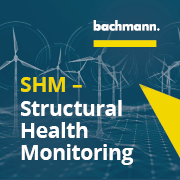Tackling corrosion issues and developing new materials in the wave, tidal and offshore wind sectors across Europe could save up to €84,000 million for developers and create up to € 82,000 million of supply chain opportunities by 2050, according to two new reports published today.
Commissioned by the NeSSIE project, the reports investigated the economic potential of anti-corrosion solutions and the development of new materials in the offshore renewables market.
Corrosion is an important concern for offshore energy developers. All marine structures face corrosion problems impacting on the operations and maintenance (O&M) costs along the global lifecycle. In the case of offshore wind farms, the O&M costs are typically around 15 – 30 per cent of the total lifecycle, with corrosion issues a significant factor in these costs.
The reports found that based on offshore renewable deployment estimations, anti-corrosion solutions and new materials could see potential developers saving over €16,000 million for wave and tidal energy projects in the EU by 2050 and potentially over €68,000 million of savings for offshore wind projects. For the anti-corrosion supply chain, the wave and tidal energy markets could potentially lead to over €25,000 million of projects in the wider EU by 2050 and over €57,000 million for offshore wind projects.
Jan Reid, team leader in the energy and clean technologies team within Scottish Enterprise, said: “This early work is really encouraging. We can see there is a tremendous economic prize for the EU offshore supply chain in tackling this challenge and supporting the EU to decarbonise the energy sector. The key to unlocking this opportunity is developing investable demonstration projects that will prove the technological solutions. Working together with Stakeholders, we at NeSSIE are excited to be involved in the development of anti-corrosion solution demonstration projects.”





















